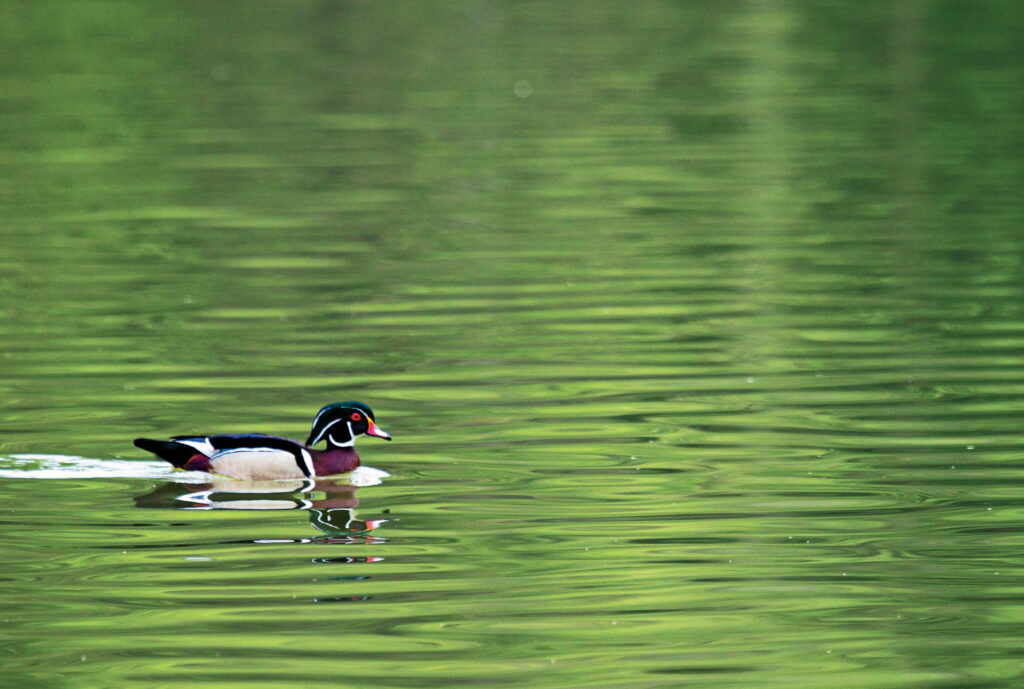“Drake Wood Duck” by Robin Conover Canon 5D Mark IV EF 100-400 mm at 400 mm, 3.5-5.6 L lens ISO 500, fl6.3 at 1/640 second, handheld
The wood duck, perhaps one of the most colorful you will see in Tennessee, is a handsome photographic subject. The spring plumage of the drake is particularly beautiful, especially compared to the muted browns of the hen. The contrasting colors of this drake against the green reflections on the lake surface certainly caught my eye.
I heard the drake flying in and hoped it would land close by. As he splashed down, which I didn’t capture, I chose to compose the photo with the rule of thirds. Focusing on the duck as I panned the camera to the right, I tried to match its speed. Keeping the subject in the lower third of the frame, I tried to hold steady as I shot about 20 frames before the duck was too far away.
It swam by quickly about 35 feet from the shore where I was standing. The encounter was less than a minute but was a highlight of this slightly overcast day.
This image isn’t as tack-sharp as I prefer, and the reason is that I needed to use a slightly faster shutter speed but just didn’t have time to recalculate settings as I was shooting. Birds in motion almost always require a shutter speed higher than 1/1600 of a second. The faster, the better, for a sharp image.
This time of year, watch for the females to be swimming with their brood of chicks typically numbering about 10-12. They stick very close to the hen for protection from predators.
Wood ducks nest in cavities or nest boxes on or near water. The chicks’ first “flight” is generally a free fall to the ground or water below.
To find out more about wood ducks or how to build a nesting box, check out the Cornell Lab of Ornithology website at birds.cornell.edu/home.



